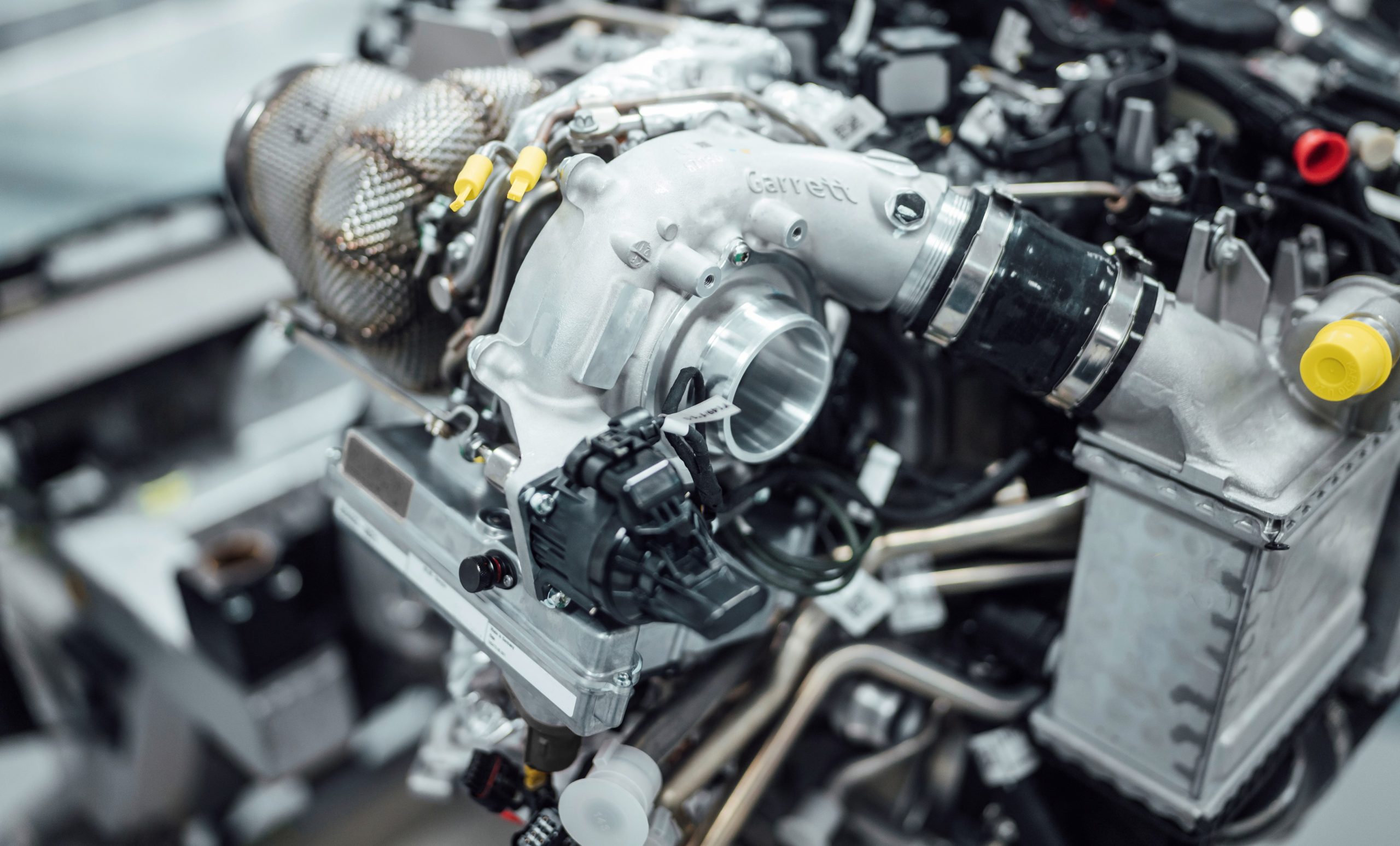Turbo-charged engines are great to drive, pulling off a dead stop immediately and really defining the thrill of putting the foot on the pedal in the car. However, far more than an average car or truck, turbo engines need regular maintenance. Unless they are used extensively on highway driving at high range speeds where the engine gets hot enough to burn off residue, regular town and commute driving is going to take its toll on a turbo engine, requiring frequent cleaning to run right.
The most common servicing tends to be cleaning out the fuel injectors. Turbo chargers are well known for pushing and moving more fuel than normal into the engine chambers. This in turn provides a significant boost in power and response. However, unburnt or leftover fuel has a bad habit of carbonizing into a sludge. That can then create a gunk that starts to clog up the works over time. Noticeable symptoms tend to be irregular idling and even the engine dying out and needing to be restarted at low speeds or stops. Cleaning out the system can be a simple or complex job, depending on where the parts are located. For example, in the Volvo V70T the critical part is under the engine, requiring significant labor work to get to it and perform the cleaning. Other vehicles have it on the top of the engine with obviously less effort for cleaning. Depending on the driving applied, the cleaning is more or less frequently needed.
Comparisons
The Dodge Dart utilizes a turbo system in its 1.4-liter engine which is advised for a cleaning at least every 30,000 miles. The larger engine model at 2 or 2.4 liters is expected to need turbo charger repair or maintenance every 100,000 miles, but a lot of short driving and commuting could make either schedule shorter.
The Hyundai Santa Fe and Sonata models, on the other hand, need a cleaning and tune up every 45,000 miles on the 2-liter engine and 105,000 on the 2.4-liter engine. Both will foul their spark plugs after those points or produce bigger problems with lots of city driving in shorter time periods.
Turbo Driving Needs Hotter Temperatures
The surefire way to help prolong the life of a turbo engine between cleaning and maintenance tends to be heavy highway driving where the speeds are above 55 mph and the engine has enough time to rise to its optimum operating temperature. This is usually an hour of driving or more. The combination of air and fuel will burn cleaner, there will be far less carbonization and the system will burn out the remaining gunk inside building up from short distance driving and city commuting. No surprise, the fuel system response and combustion will run noticeably better after a long drive as all the buildup has effectively been removed.
Turbo Driving Also Increases Part Stress
Turbo car drivers can also expect their car to need additional maintenance on other parts as well. Tires will often wear out faster, particularly the set that responds to the drive. Many turbo cars utilize sports tires versus regular models, which don’t last as long either before needing a replacement due to loss of tread. Secondly, the braking system is going to take a harder beating, slowing down at faster speeds, and the same will go for the transmission. While the transmission will last much longer, needing maintenance checks every 50,000 miles as long as fluids are topped off, the brake pads will wear down faster and need replacement every 15,000 to 20,000 miles.
Don’t be Surprised with Higher Insurance Costs
Given their reputation and faster performance on the road, turbo vehicles also tend to be more expensive to insure. Coverage providers are in the business of managing risk, and drivers of turbo engine vehicles tend to more often than not use them for faster driving and riskier behavior, at least statistically. That translates into higher insurance premiums charged on those vehicles. This is where the boring average car wins financially more often than not.
So, How Often Should Turbocharges Be Serviced?
Again, part of the answer depends on your driving style and transportation needs, and part of the answer comes with the model of car being used. Generally, any turbo driver should probably expect to need a tune up and cleaning somewhere between 30,000 and 50,000 miles. The variation is usually stated clearly in the owner’s manual, which is provided with the car or truck and also available from the manufacturer online for most recent models. Even if the vehicle is serviced by an after-market maintenance provider such as Thompson Diesel, the same schedule expectations apply. And remember, maintenance prevention is almost always cheaper than outright repairs after the fact. In fact, vehicle owners to stay on top of their maintenance generally see the longest vehicle life and the lowest number of overall repair costs in total, from model to model and brand to brand.





